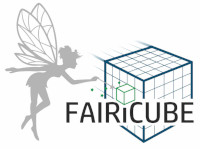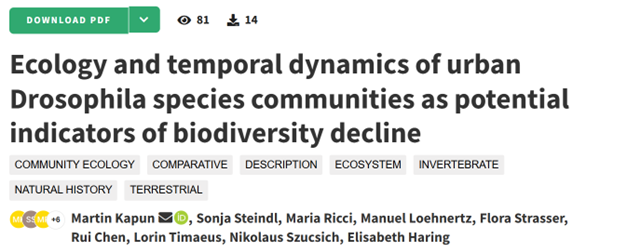We are very proud to share our new preprint: “Ecology and temporal dynamics of urban Drosophila species communities as potential indicators of biodiversity decline” (read here), written by Martin Kapun and co-authored (among others) by other Fairicube partners: Sonja Steindl, Maria Ricci and Manuel Loehnertz.
This study investigates fruit fly (Drosophila) communities across urban and suburban areas of Vienna, using a unique combination of fieldwork and Earth observation data. Our goal was to better understand how biodiversity is changing over time in cities—and what these changes mean for broader ecological health.
Key Findings
• New species records: Two species not previously observed in Austria (Drosophila mercatorum and Drosophila virilis) were detected.
• Biodiversity trends: A comparison with surveys from 30 years ago shows a decline in species richness alongside a rise in non-native species.
• Environmental insights: By combining ecological data with Earth observation products from FAIRiCUBE and space4environment sàrl, we revealed clear species–environment relationships in urban landscapes.
Why It Matters
Urbanization is reshaping ecosystems worldwide. This research highlights how Drosophila can serve as a sensitive model system to monitor biodiversity loss, detect ecological shifts, and assess the long-term impact of human-driven change on species communities.
Upcoming Presentation
Both the paper and FAIRiCUBE will be presented this week at the German Zoological Society conference. Read conference abstract here: https://hi.converia.de/frontend/index.php?page_id=2938&v=List&do=15&day=all&ses=921
We look forward to engaging with researchers and practitioners on how innovative tools and data can strengthen biodiversity monitoring.
👉 Read the full preprint: Ecology and temporal dynamics of urban Drosophila species communities as potential indicators of biodiversity decline

